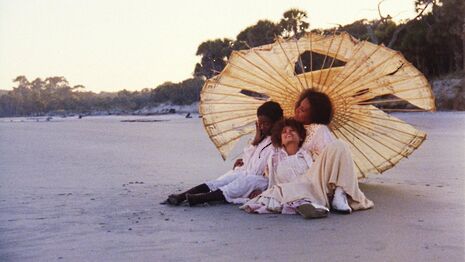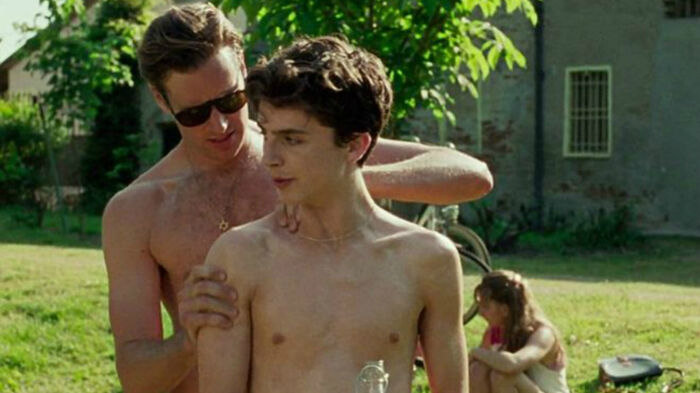Julie Dash is a daughter of the dust
In her next column, Madeleine Pulman-Jones turns to a film of tremendous significance in the history of modern cinema

Julie Dash’s 1991 film Daughters of the Dust, the first feature film by an African American woman to receive a theatrical release in the USA, opens with the following lines: “I am the first and the last. I am the honoured one and the scorned one. I am the whore and the holy one. I am the wife and the virgin. I am the barren one and many are my daughters. I am the silence that you can not understand. I am the utterance of my name.”
They are spoken by Nana Pezeant, played by Cora Lee Day, the matriarch of a Gullah family living on Saint Helena Island in South Carolina. It is the turn of the 20th century, and the younger generations of the family have decided to migrate north to the mainland, an idea which Nana Pezeant finds spiritually troubling. Based on Dash’s father’s own Gullah heritage, acutely observed expression of nuanced and contradictory identity, as exemplified by the quote above, is at the heart of this sensitive and often unexpected masterpiece.
Julie Dash studied filmmaking first at CCNY, then later at the AFI and the film school at UCLA. Inspired to move away from documentary by writers such as Toni Morrison, Dash began to develop stories that represented the struggles and resilience of African American women throughout the 20th century. Her 1982 short, Illusions, for example, told the story of a white-passing African American woman working in Hollywood in the 1940s. Though ecstatically received, Dash’s debut feature Daughters of the Dust (which she wrote, produced, and directed) sadly failed to catapult Dash into a celebrated career as an American auteur.
“In many ways in spite of its ambiguity and poeticism, the film is a powerful model for film as an intersectional matriarchal medium”
Unable to find financing for her subsequent film, Dash turned to television, music videos and writing. One can’t help but deduce that it must have been the esoteric ambitiousness of Daughters of the Dust, entirely centred on the narratives of African American women, coupled with institutional racism and sexism that led conservative mainstream Hollywood studios to turn down her post-Daughters pitches. Fortunately, after its selection by the Library of Congress for preservation in the National Film Registry in 2004, Daughters of the Dust received a high-profile restoration and re-release in 2016 after the release of Beyoncé’s visual album Lemonade (2016) which features numerous visual quotes from the film, and which the singer herself cited as a major influence on the work.
The Gullah are the descendants of enslaved Africans living in the lowlands of Georgia and South Carolina who, by virtue of their relative isolation and close society, developed a distinctive dialect and preserved many of the cultural traditions of their native African countries. Tensions between the old and the young, the “pure” and the “impure,” the mundane and the magical within the family are the contradictions that propel the plot of the film, otherwise a non-narrative poetic reverie of images and sounds.
Dash’s film, innovatively punctuated by the flashes of an early camera which turns the entire screen white (a daughter who has already moved to the mainland has hired a photographer to document the crossing), is a puzzle. Images are left decontextualised, relationships between characters remain deliciously mysterious, and the narrative structure of the film as a whole is defiantly ambiguous. In many ways in spite of its ambiguity and poeticism, the film is a powerful model for film as an intersectional matriarchal medium, empowering not only women of colour, but all women by subverting the ideas of film as a vehicle for reinforcing patriarchal narratives. In this film men often sit in the corner of the shot and speak far fewer lines than the women. They are not stripped of their power or identity, as marginal female characters are in so may films, but are truly supporting players to a strong cast of women.
That said, the empowerment of the female characters is not dependent on filmic traditions such as dialogue or close-up shots. Women run in and out of shots in slow motion. They run on the beach together, wearing long white cotton dresses, almost the same colour as the sand. They talk together, laugh together, and cook together. Though the film certainly does not lack of intense, empowered and complex conversations between its female protagonists, one gets the sense that perhaps these painterly interludes of sisterly interaction might be still more powerful and revolutionary than their conversations, and indeed it is this sisterly bond that is at the heart of the film.
The moment at which the images of ethereal sisterhood are most violently interrupted is the striking monologue by Eula, who was raped on the mainland and is now about to have a child. Her husband Eli cannot come to terms with the tragedy and the fact that their child may not be his. Eula and Yellow Mary, a cousin, maligned for her “impurity,” who has come to visit from the mainland, are hugging Nana Pezeant after the family celebration meal.
Nana Pezeant calls Yellow Mary “the fruit of an innocent tree,” prompting Eula to remind the family of Yellow Mary’s disgrace and to defend her, as well as to open up about her own rape. She reminds them that the entire family is “ruined” as a result of past abuse from slave-owners, begging them to accept and come to terms with their history. Eula’s unborn child narrates the film, and by the time this outburst occurs, the audience feels a rare complicity and empathy with Eula. She begs, “If you love yourself, love Yellow Mary, ’cause she’s a part of you – just like we a part of our mothers.”
Though the political and historical significance of Dash’s achievement is enormous, so too is her artistic triumph. In creating a film which constantly makes use of innovative and beautifully composed images and dialogue, Dash successfully combined the homogeneous cinematic language of the art-house to give justice to an underrepresented people. Her film is an essential classic, and well deserving of a place in a new cinematic canon
 Features / Should I stay or should I go? Cambridge students and alumni reflect on how their memories stay with them15 December 2025
Features / Should I stay or should I go? Cambridge students and alumni reflect on how their memories stay with them15 December 2025 News / Cambridge study finds students learn better with notes than AI13 December 2025
News / Cambridge study finds students learn better with notes than AI13 December 2025 Comment / The magic of an eight-week term15 December 2025
Comment / The magic of an eight-week term15 December 2025 News / News In Brief: Michaelmas marriages, monogamous mammals, and messaging manipulation15 December 2025
News / News In Brief: Michaelmas marriages, monogamous mammals, and messaging manipulation15 December 2025 News / Uni Scout and Guide Club affirms trans inclusion 12 December 2025
News / Uni Scout and Guide Club affirms trans inclusion 12 December 2025










